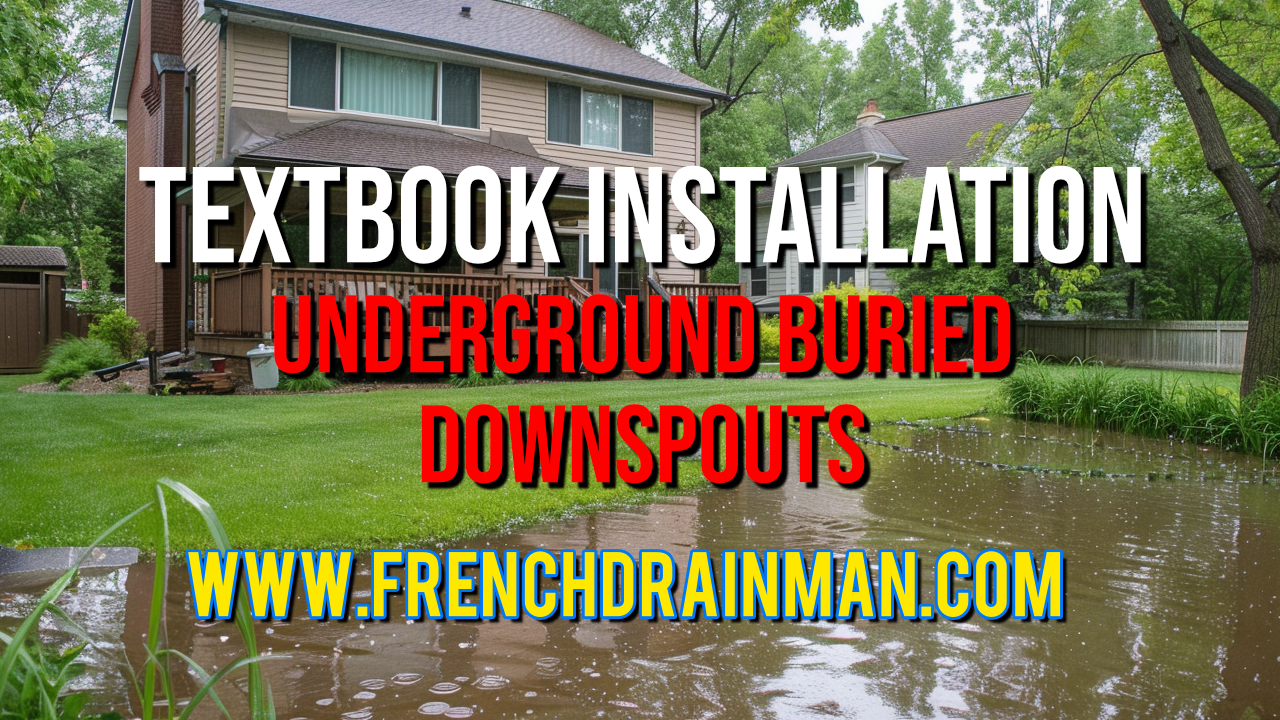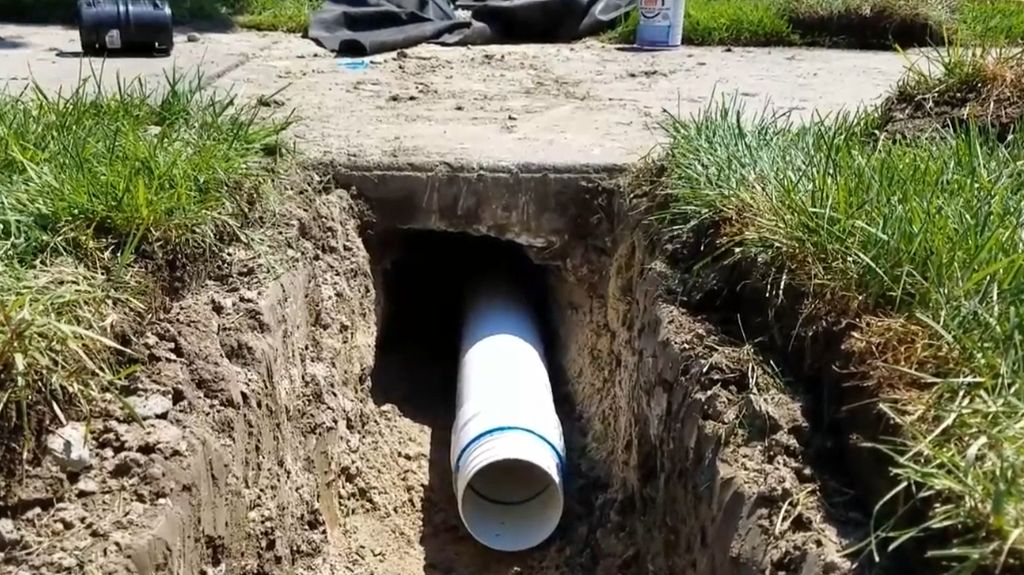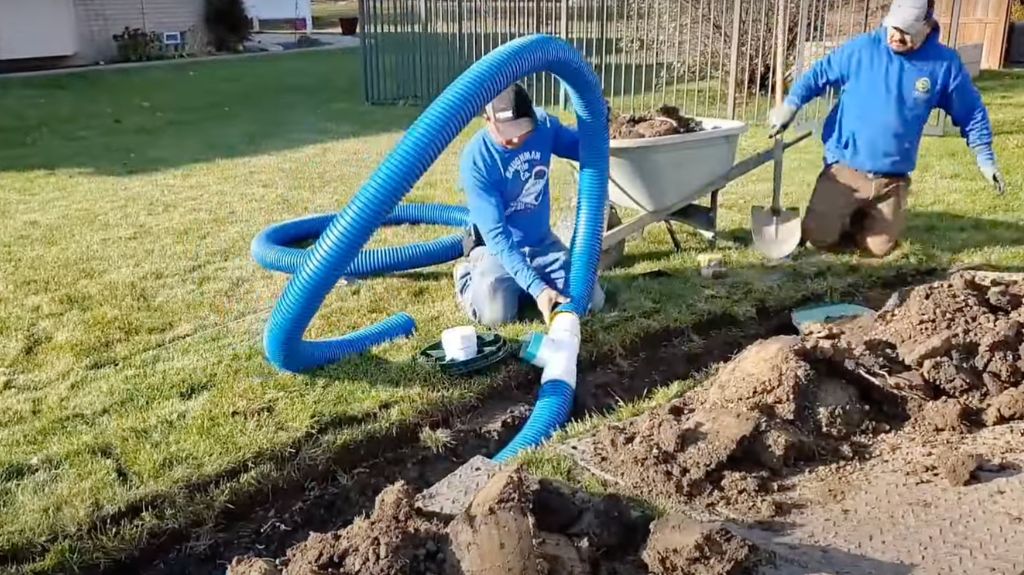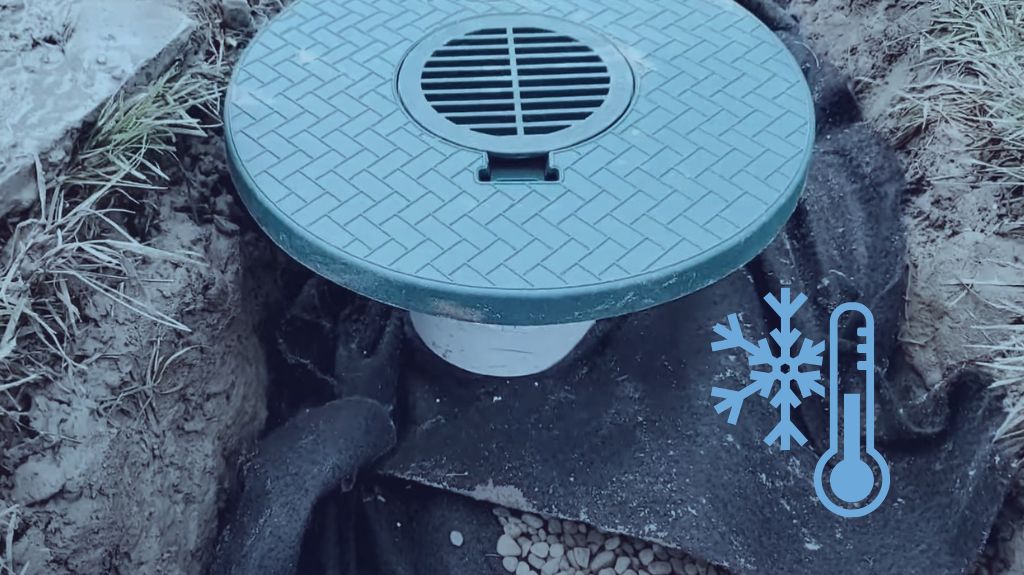Underground Buried Downspouts Must Daylight
For underground buried downspouts, if you remember one thing, remember this: they need to be able to daylight. If grass grows over the pop up emitter then the discharge is compromised which will clog your downspout with shingle gravel and debris.
Our turf restrictor kit was created out of necessity to prevent grass from growing over the discharge.
Once the downspout can’t daylight, people always say, “Oh, corrugated pipe, it clogs.” No, when it can’t daylight, it fills full of debris. If you can’t get it out, it has nothing to do with the pipe. This is all about daylighting. This is how important it is to daylight. It’s the most important thing to a roof runoff system.
Now, I like to bury downspouts further away from the house. I mean, this is too close to the cement walk. It’s too close to the house for me. That’s why we chose to basically take it out. You have a yard. It don’t break real hard until right there. I wanted to get it right at the break. Now, this water is just being sent to the street. I feel great about that.

This was another downspout that was covered up. It’s basically full of organic material that decomposed. I mean, at least it makes really good topsoil. These are leaves that have broken down. They couldn’t get out of the pop-up because the grass was growing over it. All of this was inside the corrugated pipe. All the water was coming off the roof. On these two downspouts, in particular, none of the water was coming out. It was coming out right there, right at your house. Usually, during a hard rain, if you’re out here, it’ll just be spraying just shooting up right there.
The number one thing to an underground buried downspout is it has the daylight. If life happens, if life gets busy and the grass grows over top of it, you’re not going to get shingle, gravel, or leaves to come out. They’re going to collect and build up in the pipe. It’s just going to plug the pipe.
If the grass doesn’t grow over the area of discharge, debris comes flowing out during hard rains.
Now we came up with the turf restrictor plate out of necessity. We kept getting bigger and bigger with our discharge basins. We would go from a pop-up to a six-inch round to a nine-by-nine square to a 12 by 12 square. Finally, it was like, wait a minute. We have this big 12 by 12 for discharge. It’s holding a bucket of water, which breeds all kinds of disease. It’s just a Petri dish for your pets and children to get into.
The most practical is the pop-up emitter. Very little water is left behind or held in that 90-degree elbow. The thing is the grass grows over a pop-up too quickly. It’s a liability unless you install it with a turf restrictor plate like we do.
Really happy to announce that we’re getting a mold made so that we don’t have to fabricate these by hand. A lot of labor goes into it since we install so many. Next year, it’ll be really cool to have our own FDM turf restrictor plate. It’s clean. It looks nice. Now, the grass can’t grow over the pop-up. It can daylight. It’s going to not only function when you need it. It’s not only going to allow the water to flow during those hard rain events, but it’s going to let the leaves and shingle gravel and any debris that comes off your roof, it’s going to allow it to flow right out of the discharge end.
The number one thing, the most important thing to any roof runoff system to any buried underground downspout system, is that it can daylight. You can’t just forget about it. You have to make sure that you take care of it, and you do this responsibly. Without a turf restrictor plate, you have to cut the grass out around this pop-up emitter every few weeks. I would just rather use a turf restrictor plate and be done.








